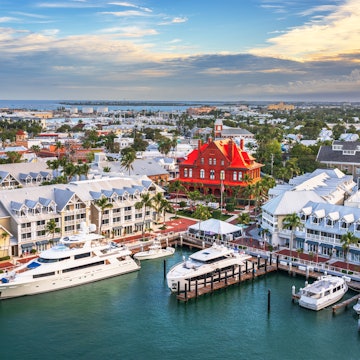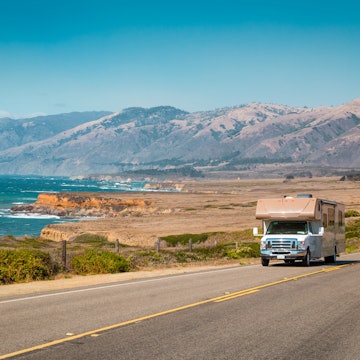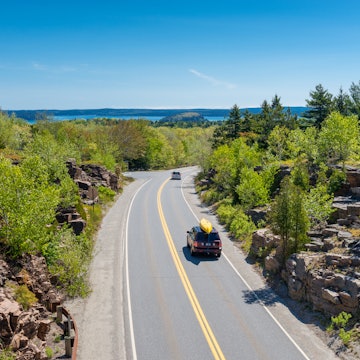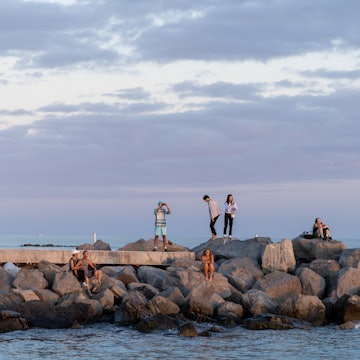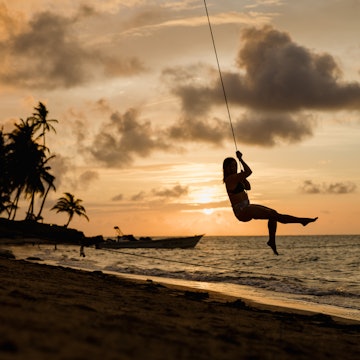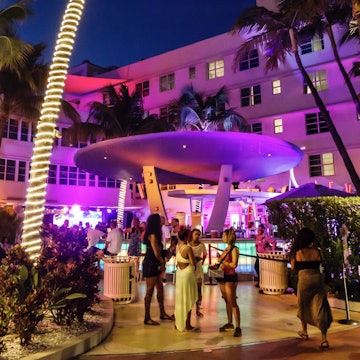

Aerial view of South Beach. Francisco Blanco/Shutterstock
Miami is a sprawling metropolis containing a multitude of cultures and attractions. While that makes for an incredible trip, it can be tricky for first-timers to figure out the best place to base themselves.
It all depends on what you want to do and who you're traveling with. Are you downing cafecitos and cocktails before salsa dancing into the wee hours or kayaking and stretching out on a beautiful stretch of sand to relax? The best neighborhood for families is unlikely to have a thumping nightlife, but some areas offer a little bit of something for everyone.
Think about your must-do priorities in Magic City (if you're in need of inspiration, check out our favorite things to do there) and let our guide to Miami's neighborhoods help you choose the best possible base for your vacation.
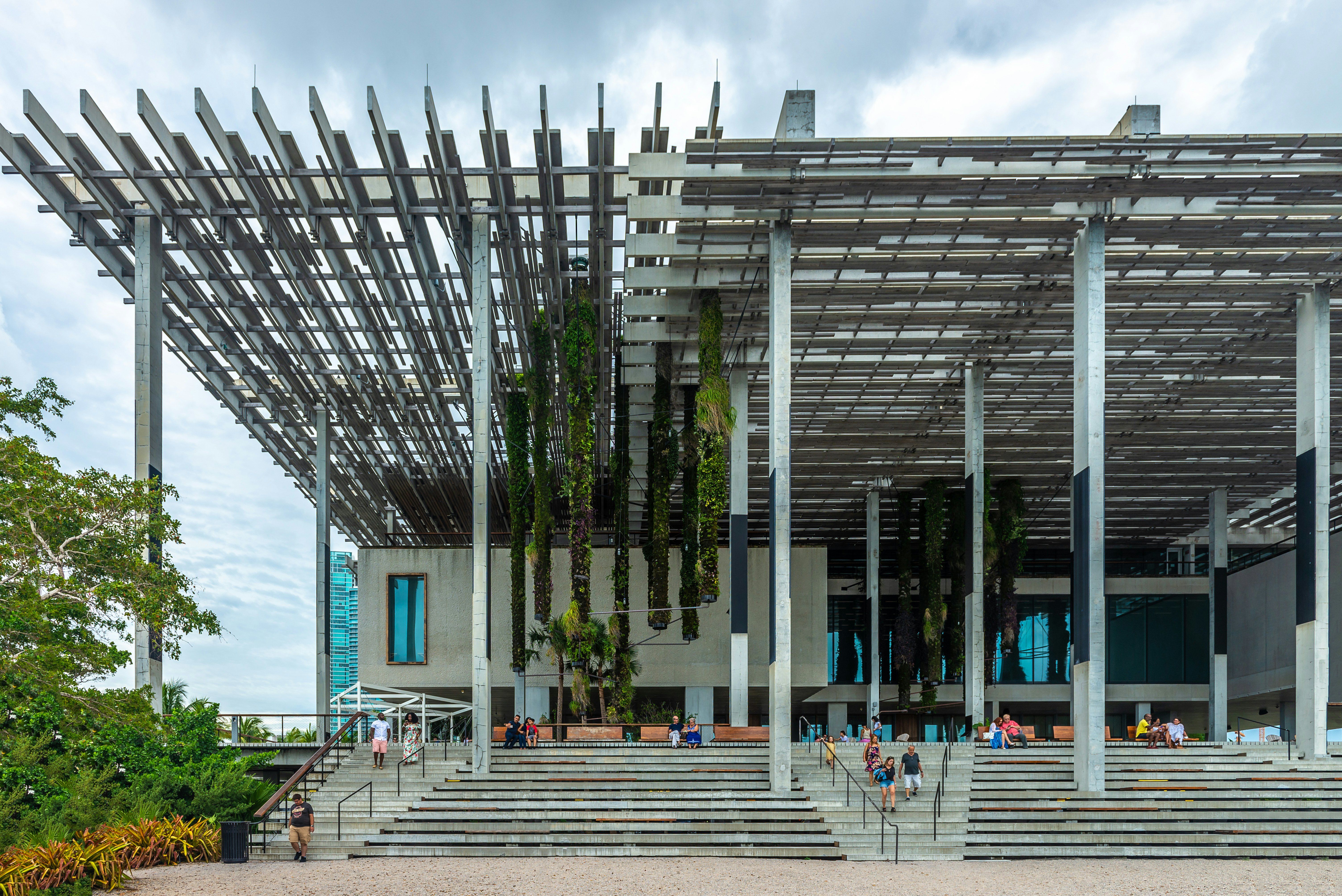
1. Downtown Miami
Best neighborhood for an all-round taste of Miami (sans beach)
To get a taste of nearly everything the city has to offer, Downtown Miami is ideal. Marvel at some of the Miami's most historic buildings, dating as far back as the 1890s – among them, the Olympia Theater (originally a silent movie theater) and the Freedom Tower (once a help center for Cuban refugees in the 1960s and 70s). Spend some time exploring and snapping photos, then learn more about the city's past at the HistoryMiami Museum.
But downtown is far from stuck in the past. Aside from the high rises, there are restaurants and retail to enjoy at Bayside Marketplace, plus boat tours on Biscayne Bay and a Ferris wheel that offers dazzling views of the neighborhood.
Fancy some culture? The Pérez Art Museum boasts a robust collection of art from Latin America and beyond, while the adjacent Frost Science Museum is home to a spectacular aquarium, planetarium and rotating exhibits. And if that's not enough, you can always see what's happening at the Kaseya Center, home of the Miami Heat and a major entertainment venue.
Where to stay: Dunn's Josephine, located in historic Overtown, has themed rooms that celebrate the lives of notable Black figures like Ella Fitzgerald and Langston Hughes. EAST Miami Luxury property is connected to Brickell City Centre with a tropical rooftop pool and great onsite dining. Gale Miami Hotel & Residence, near the Baseya Center and Brickell, is a 51-story property with a Turkish hammam and rooftop pool.
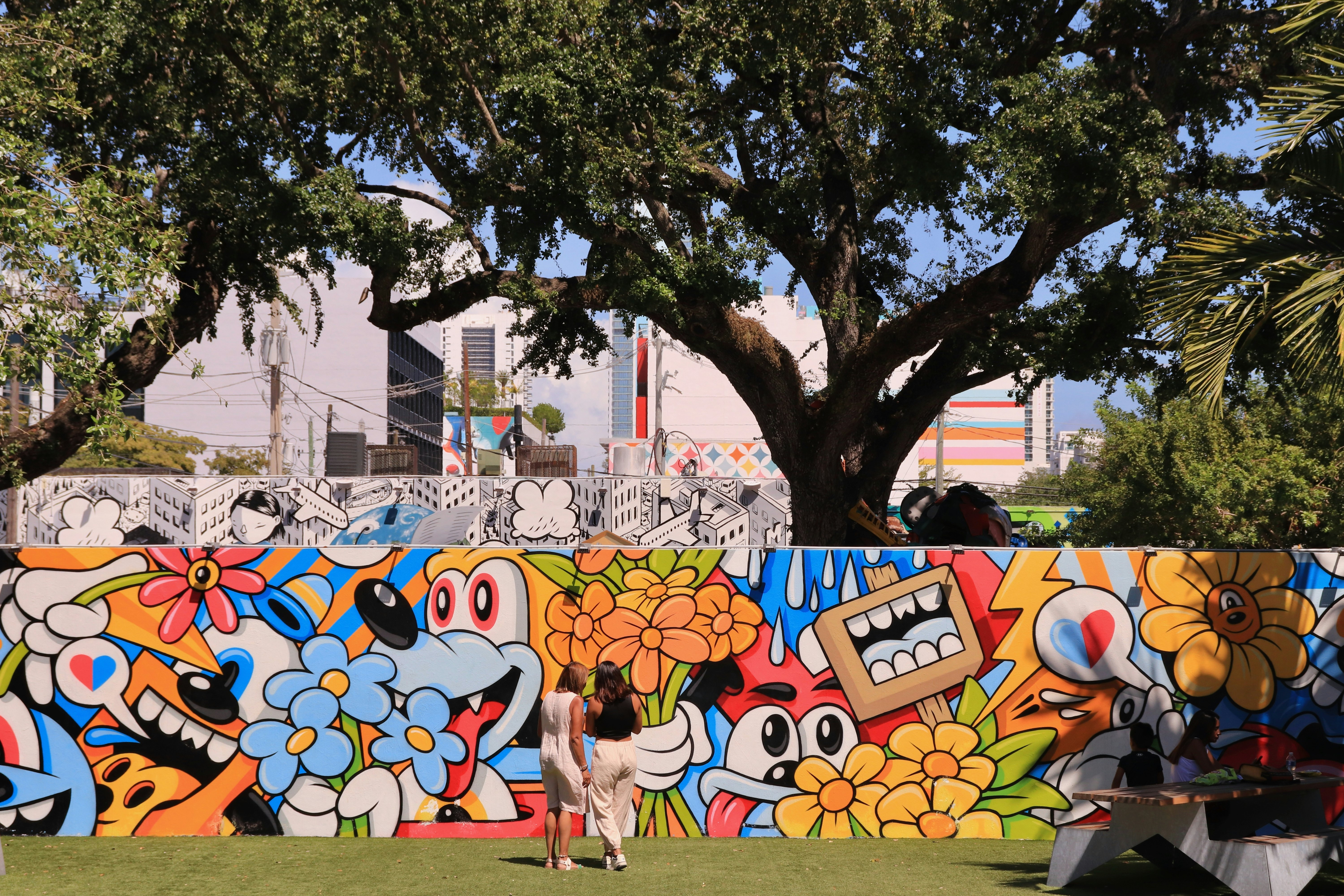
2. Wynwood
Best neighborhood for art and design
Formerly known as Little San Juan, this once-heavily Puerto Rican neighborhood has undergone tremendous change, most notably because of gentrification. Today, it's an international hub of art, fashion and design. Brilliant murals adorn nearly every building facade, many of which were created by top street artists like Shepard Fairey and Atomik. Throw a stone in any direction, and you're sure to hit an art gallery, cocktail bar, vintage shop, uber-hip clothing boutique or even a taco shop that doubles as a speakeasy.
While there's a dearth of hotels in the area, you can book a room at the Moxy, Arlo or an Airbnb. Otherwise, venture into the neighborhood at your leisure and make a day of it by picking up an iced latte at Panther Coffee before wandering between the Wynwood Walls, Museum of Graffiti and The Art of Hip Hop. The vibe changes to adults-only at night – enjoy a delicious meal at Kush or Bakan, then bar hop between R House, Dirty Rabbit, Gramps or any other spot where the music's good.
Where to stay: Arlo is adorned with gorgeous murals inside and out. This high-rise hotel has beautiful common spaces that draw the neighborhood in. Moxy Miami Wynwood offers youthful vibes near Wynwood Walls and small but contemporary rooms with a complimentary cocktail at check-in. The Hotel at the Moore, the design district's lone luxury hotel, has just 13 suites and is hidden on the 4th floor of a Historic Landmark building.
3. South Beach
Best neighborhood for beach time and nightlife
Surely the most visited area of Miami, South Beach continues to draw crowds for several reasons. First, it's the best neighborhood for beach access no matter where you stay – many hotels offer private access and even those that don't often offer amenities like chairs and umbrellas. If you're traveling with kids, stay near South Point Park; they'll love the splash pads and waving to outgoing cruise ships from the pier. For something more lively, anywhere along Ocean Drive or even Washington Ave is excellent.
Speaking of lively, the nightlife in South Beach is hard to beat. Popular staples such as Mango's, The Clevelander and Nikki Beach are always a good time, but feel free to branch out. Do Not Sit On The Furniture is a small club with huge tunes delivered by guest DJs, while M2 gives you that bass-all-over-your-body immersive party experience. And if dives are more your scene, you can't go wrong with a night at the infamous Mac's Club Deuce (if it was good enough for Anthony Bourdain, it's good enough for us).
Where to stay: Cavalier South Beach's exterior plays with tropical and marine themes. Inside, exposed brick walls and marble bathrooms are located across from the beach in the coveted heart of South Beach. Alternatively, Kimpton Surfcomber features a recently renovated pool, a happening beach bar and poolside cabanas. This oceanfront property is a short stroll from Soundscape Park.
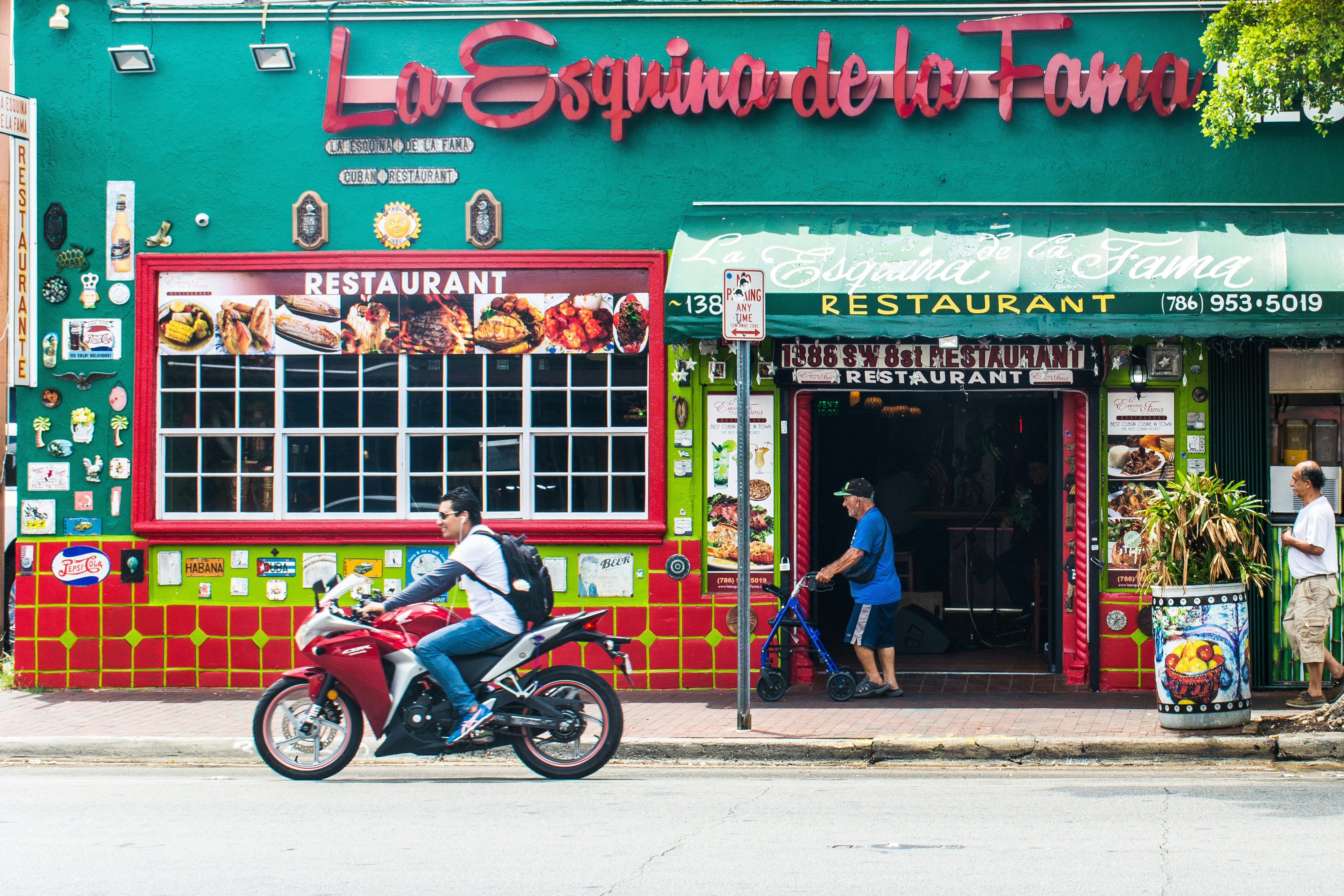
4. Little Havana
Best for immersing yourself in Latin American culture
Little Havana has plenty to offer in terms of culture and charm. Drive (or walk) along the infamous Calle Ocho, and you'll be greeted by giant, colorful rooster statues – a nod to the actual roosters that stroll about the area.
While there, check out the Cuban Walk of Fame to see the names of some of the biggest stars from the island nation. Follow up with a visit to the Cubaocho Museum for some history lessons as well as a chance to peruse art.
Hands down, this is understandably the best spot for Cuban cuisine and from Versailles to Sanguich, El Pub to El Rey de las Fritas – it's all delicious. But it's not just Cuban food on the menu – try Salvadoran food at El Atlakat, Nicaraguan food at Pinolandia or Yambo, or stop at La Casa de las Baleadas for Honduran fare. Your tastebuds will thank you.
5. Coconut Grove
Best neighborhood for seeing old-school Miami
If you'd like to experience some of Miami's lesser-known gems, spend some time in Coconut Grove. Quieter than SoBe but still plenty lively, the Grove is Miami's oldest neighborhood. Take a glimpse into the city's past at Barnacle Historic State Park (built in 1891, at a time when Miami was only accessible by boat).
Another must-see attraction is Vizcaya Museum & Gardens – this stunning waterfront villa, built in 1916, will make you feel like you've been transported to the Mediterranean. And if the weather's right, a stroll through the verdant Kampong Botanical Garden is a must.
Wander over to CocoWalk to experience the modern side of the Grove, an open-air center with boutique shops, restaurants, bars, a movie theater and more. While much of this area has been revamped in recent years, many beloved old staples are still around: delightful French bistro Le Bouchon du Grove, GreenStreet Cafe (known for their incomparable brunches), Barracuda and Sandbar (popular drinking holes), The Last Carrot (perfect for healthy food options) and El Taquito (an excellent taqueria that's open late). Make sure you check the calendar because the Grove hosts all kinds of fun events, from farmer's markets to open-air concerts.
Where to stay: The Biltmore Hotel, A National Historic Landmark and one of Florida's most storied hotels, features a championship golf course, 10 lit tennis courts and one of the US's largest hotel pools. Hotel Arya has a pool, a squash court and sweeping Biscayne Views. There's a lot to like at this Coconut Grove address. Hotel St Michel is a boutique in a historic landmark building with an excellent on-site Italian restaurant. Mr C has rooms with European glamour and its rooftop pool gazes out on Biscayne Bay.
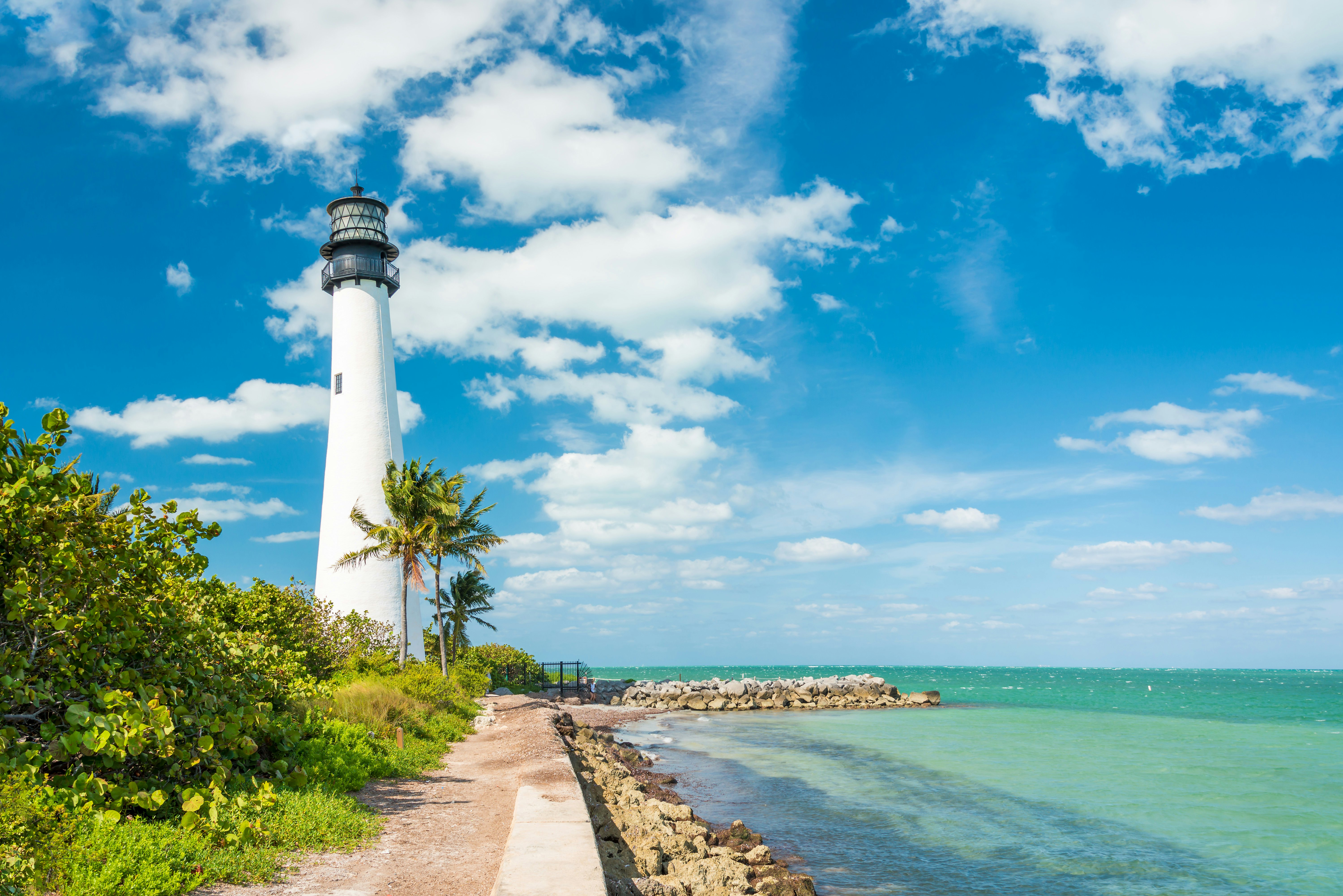
6. Key Biscayne
Best for families seeking a low-key vacation
If you're looking for a relaxing beach getaway with the kids, you simply can't go wrong with Key Biscayne. It's like a little world unto itself, with just one major road to get from one end to the other.
Once there, you can divide your time between Crandon Park and Bill Baggs Cape Florida State Park. The former features one of the city's best Nature Centers, a mangrove boardwalk, guided hikes, plus plenty of space to enjoy the beach. Kiteboarding, kayaking and other eco-adventure tours are also available here.
The beaches at Bill Baggs are just as lovely, with opportunities to explore the on-site lighthouse, as well as go fishing, hiking, swimming, paddling and biking (single and quad bikes are available for rent). And if you're traveling with a four-legged friend, nearby Hobie Beach (adjacent to Virginia Key) is also a great place to spend a few hours.
Where to stay: Accommodations aren't plentiful – the Ritz Carlton is one of the few hotels in the area – but there are always Airbnbs available for the whole family (and you can still visit the Ritz for spa time).










